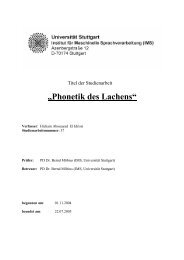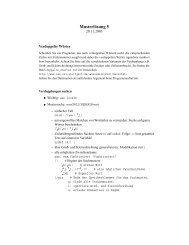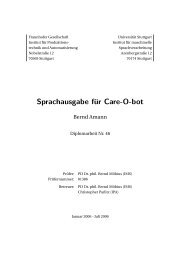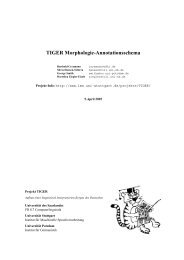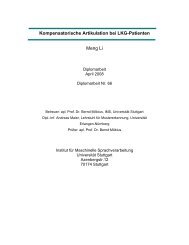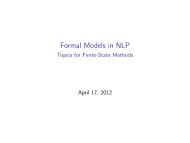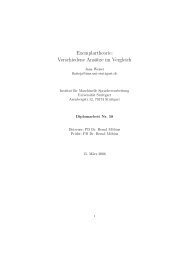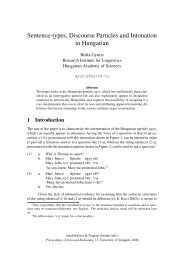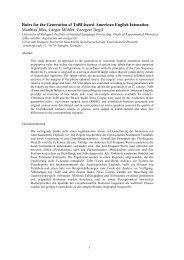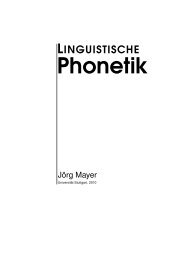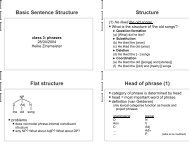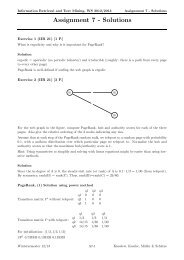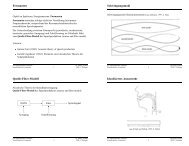Ein Computerlinguistisches Lexikon als komplexes System
Ein Computerlinguistisches Lexikon als komplexes System
Ein Computerlinguistisches Lexikon als komplexes System
Sie wollen auch ein ePaper? Erhöhen Sie die Reichweite Ihrer Titel.
YUMPU macht aus Druck-PDFs automatisch weboptimierte ePaper, die Google liebt.
Zusammenfassung<br />
This thesis describes a lexicon that allows for the detailed specification of<br />
lexemes, thereby using diverse features to enable an adequate treatment of the<br />
phenomena mentioned above. The question asked in this thesis is:<br />
How must a computational-linguistic lexicon be constructed to optimally<br />
support the fully automatical morphological analysis of German?<br />
The thesis de<strong>als</strong> specifically with word formation phenomena, but the treatment<br />
of inflection is included in the description of existing systems.<br />
2 The Idea and Realisation<br />
The idea pursued in this thesis is to identify the relevant morphological processes<br />
occurring in the German language, and to assign them to one of two<br />
models of linguistic description (see below). Thus, an adequate treatment for<br />
any of these can be found, and furthermore, the representation of the corresponding<br />
lexical units in the lexicon can be stated. The benefit for the reader is<br />
the documentation of a large German morphological lexicon, particularly with<br />
regard to its internal structure, the description of the morphological units<br />
contained, and the knowledge about the relations between the structure, the<br />
units, and morphological analysis.<br />
Two models of linguistic description<br />
Morphological phenomena can be classified into two types (cf. Hockett (1954)):<br />
1. phenomena, that can be explained in a strictly concatenative fashion (the<br />
so-called item and arrangement (IA) model), and<br />
2. phenomena, that cannot be explained in a strictly concatenative fashion<br />
(the so-called item and process (IP) model).<br />
A great deal of confusion in word formation analysis stems from the fact<br />
that these two models are not sufficiently distinct from one another in the description<br />
of phenomena.<br />
The concept of the stem form<br />
Fuhrhop (1998) introduces the concept of the stem forms. In a stem paradigm<br />
– comparable to the notion of the inflectional paradigm – the compounding<br />
stem forms and the derivation stem forms of a lexeme are listed. These are<br />
176



